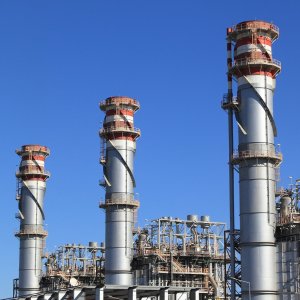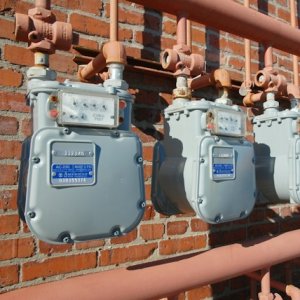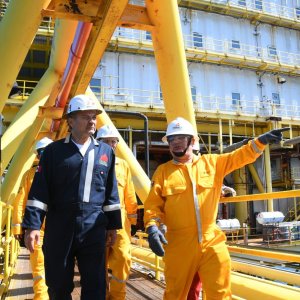DCS Set to Unlock New Possibilities for Industry

STORY INLINE POST
Over the years, Distributed Control Systems (DCS) have had to evolve significantly to reflect changing demands, work practices and market trends. However, the best years are still to come, with digitalization set to introduce innovations in DCS technologies and unlock new possibilities for industry.
In many ways automation is really nothing new. The ancient Greeks invented a number of devices that used feedback control loops to move mechanical components without human input. The Industrial Revolution saw the introduction of machines driven by water and steam. Electrification laid the groundwork for modern computerized control systems and more recently paved the way for DCS, which allow the management of many processes simultaneously and in perfect synchronization.
It has been 40 years since the introduction of the first DCS, during which time significant progress has been made in refining and improving the technology. Indeed, digitalization, and the “Digital DCS,” is set to open the floodgates once more in the coming years and decades, unleashing new potential for process automation systems to maximize productivity, without compromising reliability and safety. Meanwhile, sustainability has rapidly climbed to the top of the agenda and any DCS of the future must be able to accelerate progress and promote innovation if the world is to achieve its net-zero targets.
Adaptive Systems
As machines and systems grow more complex, industries increasingly require control systems that can not only run processes seamlessly and effectively but can also be used with relative ease. They must also facilitate effective collaboration between people, systems, and equipment to ensure maximum productivity.
How will this be achieved? Digitalization is the key to unlocking the functionality required to power the factory of the future. The DCS has always been connected but the rules of that connectivity were traditionally heavily prescribed, with a master controller at the top governing an entire process from start to finish. The concept of modular automation, whereby complex processes are broken down into modular building blocks that can be added, subtracted or amended discreetly without affecting the wider process, can help to provide businesses with unprecedented agility, while also reducing costs and engineering time. Modules are equipped with their own intelligence and can function autonomously without the need for executive control, yet can also plug into the wider system with ease.
The flexibility that this creates cannot be understated. A DCS is typically an expensive investment, and so it cannot simply be replaced every time something new comes along or when additional functionality is required. As such, the modern DCS must be able to evolve to meet not only current needs but also offer the flexibility and adaptability to meet the needs of tomorrow. This is where a modular approach comes into its own, as elements of the process can be changed or upgraded without having to rip out the entire system and start again, practically future-proofing the DCS against new developments in the market.
Connected Systems
Smart devices and systems, connected via the cloud, make this type of architecture more achievable than ever before, while opening a vast range of new opportunities to improve process reliability and efficiency. Real-time analytics on the efficiency of subsystems or even individual components can be accessed, monitored, and actioned in near real-time, even from remote locations. And because the system is modular, not only can potential issues be detected earlier, but the module can also be removed from the wider process and worked on without incurring plant downtime.
Connected systems are crucial if users are to unleash the potential of the modern DCS. As such, an open approach to communications and compatibility is key to driving innovation in this field. Proprietary systems can lock customers into certain manufacturers, which can result in exposure to any challenges that the manufacturer may have in terms of supply issues, obsolescence, or a lack of timely access to sufficiently experienced engineering teams to rectify any potential faults or problems. Automation manufacturers like ABB recognized this problem some years ago and resolved to work together to develop standards that would result in cross-compatibility between devices and components.
Shared Architecture
NAMUR Open Architecture (NOA) was established in 2016 and sets out a vision for how to apply digital technologies to control systems in process-oriented industries. NOA seeks to make production data easily and securely usable for plant and asset monitoring as well as optimization by maintaining shared standards that all manufacturers signed up to the agreement must adhere to. As well as creating a more open market for customers, which will drive innovation, it also reduces the complexity of engineering on proprietary systems, as experience gained on one system can be applied to another.
Building on these efforts is the next step in the evolution of the DCS. Leveraging digital technologies, such as edge computing and the cloud require collaboration, particularly given the sheer complexity of the technologies and systems involved. It also means a focus on what the end user needs from their DCS, and not just what the manufacturer wants to or is able to offer. For instance, smart sensors can automatically transmit vast amounts of process data continuously to provide feedback on machine and process performance.
There is, however, a limit to how much data a human operator can evaluate at once. This is also a key reason why automation will not fully replace humans anytime soon, as they will continue to be a crucial barrier to preventing processes from running out of control. However, any DCS must be able to not only turn all this data into useful information, but to then analyze what information the operator needs to know and what they do not. The modern DCS enables the improved flow of IoT data, ensuring that the right information gets to the right person at the right time, allowing them to take appropriate and timely action while facilitating more effective and streamlined decision-making.
Industry is also prioritizing sustainability in any discussion about technology to drive toward net zero. Innovations achieved by the DCS of the future will help advance both operational efficiency and productivity, while improvements in efficiency can help to reduce emissions and raw material use.
In summary
Process automation systems of the future will empower industries to compete in a fast-changing world by delivering adaptable, reliable, integrated, modular, and secure automation solutions. Collaboration will be key and the result will facilitate better integration and ease of use for operators, while creating an ecosystem whereby the DCS will adapt to meet any challenge that arises in the future.
























